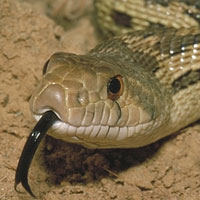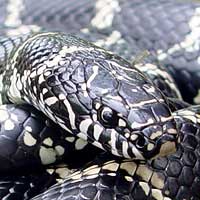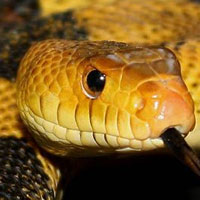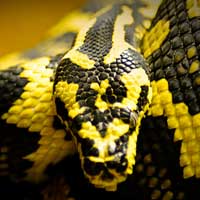Discover the Fascinating Egyptian Cobra: A Comprehensive Guide
The Egyptian Cobra (Naja haje) belongs to the Elapidae snake family, a group characterized by its highly venomous species with fixed front fangs and potent neurotoxic venom, making it one of the most recognizable and ecologically important snakes in North Africa and the Middle East.
Scientific Name: Naja haje
Snake Family: Elapidae
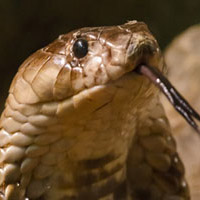
An Overview of the Egyptian Cobra
The Egyptian Cobra (Naja haje) is one of the most iconic venomous snakes in Africa, recognized for its imposing hood and potent venom. Found across North Africa and parts of the Middle East, this snake has been a symbol of power and mystery in ancient cultures. Despite its intimidating appearance, the Egyptian Cobra plays a crucial role in controlling pest populations in its ecosystem.
Where Does the Egyptian Cobra Live?
The Egyptian Cobra is highly adaptable, thriving in diverse environments. Key habitat details include:
- Geographic Range: Found across North Africa, including Egypt, Libya, and Sudan, as well as parts of the Middle East.
- Preferred Environments: Grasslands, savannas, deserts, and agricultural fields.
- Climate: Prefers arid to semi-arid climates but can survive in regions with moderate humidity.
Below is a summary of the Egyptian Cobra’s habitat preferences:
| Habitat Feature | Description |
|---|---|
| Geographic Range | North Africa and the Middle East |
| Preferred Terrain | Grasslands, savannas, and deserts |
| Climate | Arid to semi-arid |
What Does the Egyptian Cobra Eat?
The Egyptian Cobra is a carnivorous predator with a diet that reflects its adaptability. Key dietary details include:
- Primary Prey: Rodents, birds, and other small mammals.
- Occasional Prey: Frogs, lizards, and eggs.
- Hunting Method: Uses its venom to immobilize prey before swallowing it whole.
This snake’s diet makes it a valuable pest controller, particularly in agricultural regions where rodents can cause significant crop damage.
Understanding the Behavior of the Egyptian Cobra
The Egyptian Cobra is known for its defensive displays and reclusive nature. Key behavioral traits include:
- Activity Patterns: Primarily nocturnal, although it may be active during cooler parts of the day.
- Defensive Displays: Spreads its hood, hisses loudly, and may deliver a mock strike before biting if threatened.
- Social Behavior: Solitary, except during mating season.
While its behavior may seem aggressive, the Egyptian Cobra prefers to avoid conflict and will retreat if given the opportunity.
Health and Lifespan of the Egyptian Cobra
The Egyptian Cobra is a resilient species with a relatively long lifespan. Important health considerations include:
- Lifespan: 10-15 years in the wild, up to 20 years in captivity.
- Health Risks: Susceptible to parasitic infections and habitat destruction.
- Predators: Birds of prey, large mammals, and other snakes pose threats, especially to juveniles.
Proper habitat management and veterinary care in captivity can significantly enhance the Egyptian Cobra’s health and longevity.
How Does the Egyptian Cobra Reproduce?
The Egyptian Cobra reproduces through oviparous means, laying eggs that hatch after an incubation period. Key reproductive details include:
- Mating Season: Spring to early summer.
- Clutch Size: Typically 8-20 eggs per clutch.
- Incubation Period: Eggs hatch after approximately 60-70 days.
- Hatchling Behavior: Juveniles are fully independent and venomous from birth.
This species’ reproductive success is closely tied to favorable environmental conditions and food availability.
Safety Guidelines for Handling the Egyptian Cobra
Handling the Egyptian Cobra requires expertise and extreme caution. Key safety tips include:
- Use proper tools like snake hooks and secure containers for handling.
- Wear protective gloves and boots to minimize bite risks.
- Ensure enclosures are escape-proof and mimic natural habitats.
- Have antivenom readily available and know emergency protocols.
Only trained professionals should handle this species to ensure both human safety and the snake’s welfare.
Disclaimer
The information provided in this article is for educational purposes only. SnakeEstate strongly advises against handling or interacting with venomous snakes, such as the Egyptian Cobra, unless you are a trained and licensed professional. These snakes pose significant risks, and improper handling can result in serious injury or death. Always adhere to local regulations and prioritize safety when dealing with wildlife.
Other Snakes In This Species
 Asp Viper
Asp Viper Black Mamba
Black Mamba Boomslang
Boomslang Brazilian Coral Snake
Brazilian Coral Snake Bushmaster
Bushmaster Coastal Taipan
Coastal Taipan Common Death Adder
Common Death Adder Common European Adder
Common European Adder Copperhead
Copperhead Coral Snake
Coral Snake Cottonmouth
Cottonmouth Eastern Brown Snake
Eastern Brown Snake Eastern Diamondback Rattlesnake
Eastern Diamondback Rattlesnake Egyptian Cobra
Egyptian Cobra Fer-de-lance
Fer-de-lance Forest Cobra
Forest Cobra Indian Cobra
Indian Cobra Inland Taipan
Inland Taipan Jameson’s Mamba
Jameson’s Mamba King Cobra
King Cobra Lancehead
Lancehead Lataste’s Viper
Lataste’s Viper Malayan Krait
Malayan Krait Mojave Rattlesnake
Mojave Rattlesnake New Guinea Small-eyed Snake
New Guinea Small-eyed Snake Nose-horned Viper
Nose-horned Viper Puff Adder
Puff Adder Russell’s Viper
Russell’s Viper Saw-scaled Viper
Saw-scaled Viper Solomon Island Coral Snake
Solomon Island Coral Snake South American Rattlesnake
South American Rattlesnake Tiger Snake
Tiger Snake Western Diamondback Rattlesnake
Western Diamondback Rattlesnake



